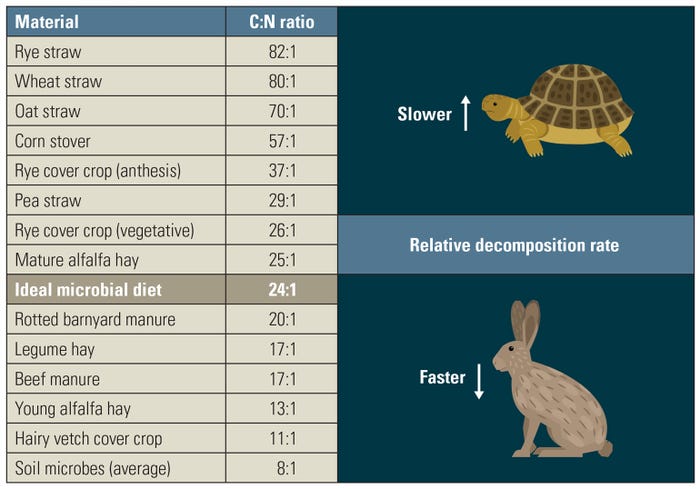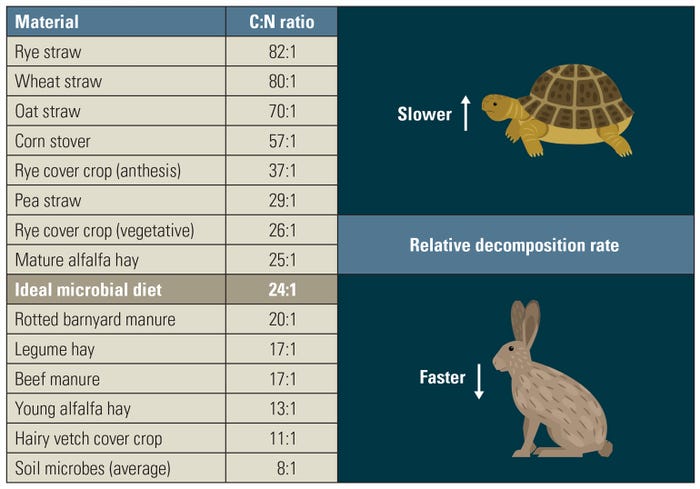February 27, 2018

You don’t have to be involved with cover crops very long to hear about the C:N ratio — carbon-to-nitrogen ratio. These numbers have a direct impact on cash and cover crop residue decomposition rates. They also impact your N use and can help you better manage overall soil health.
Think of it as feeding soil “livestock” — soil microbes that eat and digest crop residues. They have a C:N “conversion rate” of around 8:1. They need to eat residues that are near 24:1 to maintain optimum health. Roughly 66% of the carbon they eat is used for energy; the balance is for maintenance.
So the closer we, as farmers, can manage to supply that ideal 24:1 C:N ratio, the better we maximize the opportunity for those microbes to process and release nutrients our cash crops can use. And yes, it can affect our bottom lines!
How you can do it
It’s not an exact science like dairy rations. But we can supply a smorgasbord of residues providing at least a portion of ideal C:N ratios at any given time. Take a peek at the accompanying Natural Resources Conservation Service chart and you’ll see a wide range of crop C:N ratios.
Mature alfalfa hay at 24:1 is nearly perfect for the microbes. But planting cover crop mixes such as hairy vetch and cereal rye provide the best options for them. The mix gives microbes an opportunity to balance their own diet, just like we try to do as humans — and for on-the-hoof livestock. A balanced diet equals health and productivity.
Yes, tillage aids residue decomposition. But it also kills, or at least beats up the microbes, the very tiny critters trying to do their part in the biological system. If microbes are undisturbed and provided food — a 24:1 C:N ratio diet — they’ll thrive, and provide us with many nutrient cycling benefits.
What economic benefits?
Tough question. But just like the bigger cover crop aspects, the biggest answer is found in the really big picture — like 10 to 20 years from now.
But yes, there is immediate profitability to be derived from a proper C:N ratio. For example, I grow no-till pumpkins — planted into a thick rolled cover crop mix of triticale and hairy vetch. Aside from making the microbes happy with a balanced diet, I benefit by using less N.


Soil erosion on my hills is slashed. As a bonus, my pumpkins are cleaner due to the rolled mulch that keeps the soil from splashing onto the fruit. In the long term, my soil organic matter continues to slowly increase. Even though I can’t put an exact value on that, we all agree it does indeed have significant value.
Dig deeper for benefits on your own farm. NRCS’s site has very good detailed information.
The Coach’s Closer
Don’t get too hung up on technical aspects of targeting ideal C:N ratios. Manage for diversity of plant species and reduce tillage as much as possible, and you’ll certainly provide a better opportunity for long-term soil health benefits.
Groff is a cover crop pioneer and innovator who farms on the Chesapeake Bay watershed. Check out his website, covercropcoaching.com.
About the Author(s)
You May Also Like




